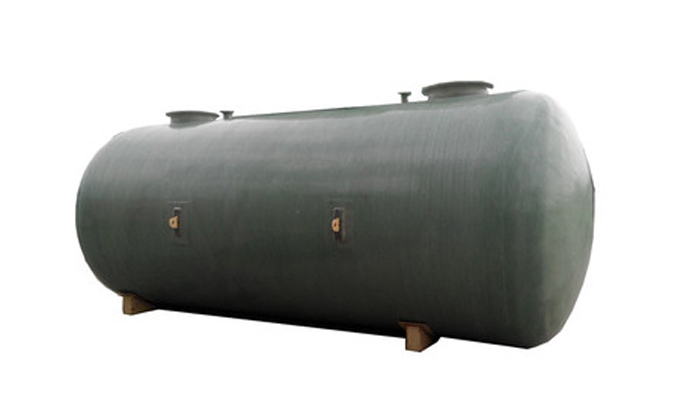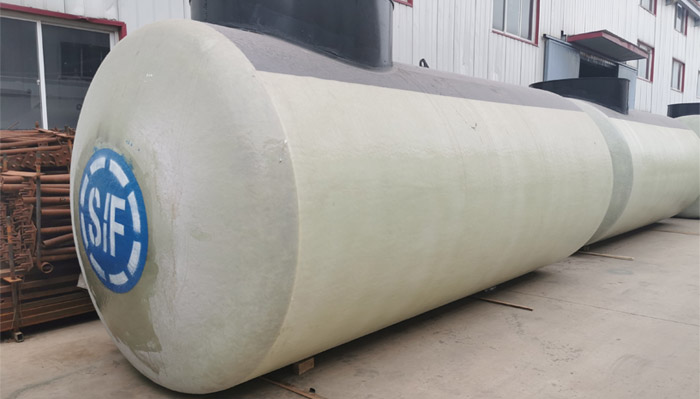Product Category
Common problems of double-layer oil tank accessories
Date: Oct 23, 2020

The safety accessories of double-layer oil tanks are set up to ensure the safety of pressure vessels to prevent or eliminate various oil tank accidents, including flame arresters, breathing valves, hydraulic safety valves, electrostatic grounding devices, etc.
It is well known that safety is the basis of production and development. Today, we will briefly introduce and analyze the problems of the accessories and discuss the reasons for the safety accessories of oil tanks, breathing valves, hydraulic safety valves, and the reasons.
breathing valve
The main function of the double-layer oil tank breathing valve is to ensure the safety of the oil tank and reduce oil loss. The basic function of the breathing valve is to ensure the safe and airtight storage of the oil tank and reduce the evaporation loss of oil. In the case of airtight oil storage, whether the pressure vessel will dent and tilt due to overpressure depends on whether the airflow can smoothly pass through the breathing valve when the oil tank breathes. The following problems exist in the current use of breathing valves:
1. The lack of anti-freezing function is because the mixed gas of oil and gas, air and steam in the head space of the oil tank is subjected to pressure as the temperature decreases, and is cooled when it is connected to the valve disc or flows through the valve disc, and the temperature is below its own dew point temperature. The steam turns into water and then freezes. The consequence is that the valve disc and the valve seat freeze together and fail.
2. The problem of air leakage, jamming and adhesion is that the valve disc, valve seat and other materials of some breathing valves are unreasonably selected and deformed by the oil in the tank, which causes a large amount of oil and gas to overflow from the breathing valve. The jamming event usually occurs when the breathing valve is installed incorrectly or the oil tank is deformed, which causes the valve disc guide rod to be skewed and the valve rod is rusted. The valve seat cannot be in place when moving up and down along the rod, and the valve disc is stuck to a part of the guide rod. The adhesion is caused by the chemical and physical changes caused by the mixture of oil vapor, moisture and dust deposited on the disc, valve seat, guide rod and so on, which makes the valve disc and the valve seat or guide rod stick together over time. 3. Clogging problem This is mainly due to the long-term failure to maintain the breathing valve or the deposit of dust, rust and other debris in the breathing tube, and the nesting of insects or birds.
3. Clogging problem This is mainly due to the long-term failure to maintain the breathing valve or the deposit of dust, rust and other debris in the breathing tube, and the nesting of insects or birds.
hydraulic safety valve
The hydraulic safety valve is also an important equipment to improve the safe use of double-layer oil tanks. Its working pressure is 5%-10% higher than that of the mechanical breathing valve. Under normal circumstances, it is not moving, but when the mechanical breathing valve is rusted or due to the valve disc It will play a role in the safety seal of the oil tank and prevent the damage of the oil tank when the oil tank is stuck and malfunctions or the oil tank is abnormally received and paid. The main problem with hydraulic safety valves is fuel injection. The reasons are as follows: First, the height of the oil collection tank is not enough. When the pressure in the storage tank reaches the working pressure of the hydraulic safety valve, the small bubbles that emerge will overflow the oil collection tank and fall on the top of the tank, causing oil injection; second, the installation deviation will cause the oil in the valve There is a difference in height so that when the working pressure is reached, the oil on the lower side may overflow.
It is well known that safety is the basis of production and development. Today, we will briefly introduce and analyze the problems of the accessories and discuss the reasons for the safety accessories of oil tanks, breathing valves, hydraulic safety valves, and the reasons.
breathing valve
The main function of the double-layer oil tank breathing valve is to ensure the safety of the oil tank and reduce oil loss. The basic function of the breathing valve is to ensure the safe and airtight storage of the oil tank and reduce the evaporation loss of oil. In the case of airtight oil storage, whether the pressure vessel will dent and tilt due to overpressure depends on whether the airflow can smoothly pass through the breathing valve when the oil tank breathes. The following problems exist in the current use of breathing valves:
1. The lack of anti-freezing function is because the mixed gas of oil and gas, air and steam in the head space of the oil tank is subjected to pressure as the temperature decreases, and is cooled when it is connected to the valve disc or flows through the valve disc, and the temperature is below its own dew point temperature. The steam turns into water and then freezes. The consequence is that the valve disc and the valve seat freeze together and fail.
2. The problem of air leakage, jamming and adhesion is that the valve disc, valve seat and other materials of some breathing valves are unreasonably selected and deformed by the oil in the tank, which causes a large amount of oil and gas to overflow from the breathing valve. The jamming event usually occurs when the breathing valve is installed incorrectly or the oil tank is deformed, which causes the valve disc guide rod to be skewed and the valve rod is rusted. The valve seat cannot be in place when moving up and down along the rod, and the valve disc is stuck to a part of the guide rod. The adhesion is caused by the chemical and physical changes caused by the mixture of oil vapor, moisture and dust deposited on the disc, valve seat, guide rod and so on, which makes the valve disc and the valve seat or guide rod stick together over time.

hydraulic safety valve
The hydraulic safety valve is also an important equipment to improve the safe use of double-layer oil tanks. Its working pressure is 5%-10% higher than that of the mechanical breathing valve. Under normal circumstances, it is not moving, but when the mechanical breathing valve is rusted or due to the valve disc It will play a role in the safety seal of the oil tank and prevent the damage of the oil tank when the oil tank is stuck and malfunctions or the oil tank is abnormally received and paid. The main problem with hydraulic safety valves is fuel injection. The reasons are as follows: First, the height of the oil collection tank is not enough. When the pressure in the storage tank reaches the working pressure of the hydraulic safety valve, the small bubbles that emerge will overflow the oil collection tank and fall on the top of the tank, causing oil injection; second, the installation deviation will cause the oil in the valve There is a difference in height so that when the working pressure is reached, the oil on the lower side may overflow.
Last article:
Next article:
Send Your Inquiry
We not only provide a good product, but also provide high quality service. If you are interested in our products,
you can contact us in the following ways.
you can contact us in the following ways.







